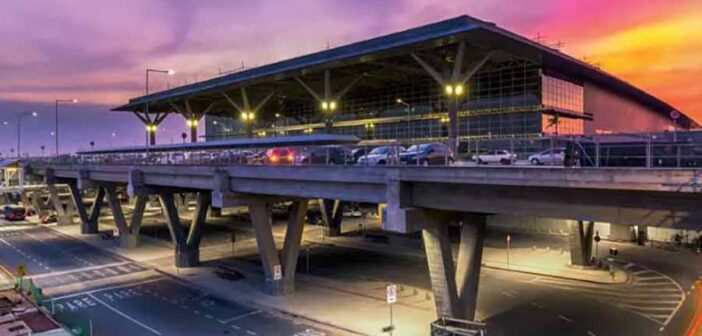Sao Paulo-Guarulhos International Airport, officially named Governor André Franco Montoro International Airport, stands as Brazil’s largest aviation hub, handling over 41 million passengers annually. Located 25 kilometres northeast of Sao Paulo’s city centre, this bustling airport serves as a primary base for LATAM Airlines, Gol, and Azul, connecting travellers to domestic destinations like Rio de Janeiro and international routes across Europe, North America, and Asia. Its modern infrastructure and extensive amenities ensure a smooth journey for those passing through.
Accessing the airport is convenient, with multiple transport options catering to different needs. The Airport Bus Service offers direct shuttles to major hotels, the main bus terminal, and Congonhas Airport, taking 1-2 hours for around $17.50, though Sao Paulo’s notorious traffic can extend travel times. Public EMTU buses, such as lines 258 and 472, connect to Tatuapé subway station in 30-40 minutes for $2.15, with tickets available at Terminal 2 or 3 counters. The Line 13-Jade train links to Brلs station in 35 minutes for $1.20, integrating with Sao Paulo’s metro system.
Taxis, operated by Guarucoop, provide a 30-minute ride to downtown for $30-40, using bus lanes to avoid congestion. Drivers benefit from easy access via the Hélio Schmidt Highway, with economy parking at $12 per day and short-term options near terminals. Pre-booking bus or train tickets is advisable, as services can be crowded during rush hours.
The airport’s layout comprises three terminals: Terminal 1 for domestic flights by Azul, Terminal 2 for most domestic and some international flights, and Terminal 3 for long-haul international routes. Terminal 2, the largest, is split into West (domestic) and East (mixed) piers with 29 gates, while Terminal 3 features 22 gates, five accommodating Airbus A380s. A free shuttle bus connects all terminals every 15 minutes, taking about 10 minutes, though walking between Terminals 2 and 3 via a hallway takes 15-20 minutes. Terminal 1 requires shuttle use, as it lacks direct access.
Security checks typically take 15-30 minutes, but arriving three hours early for international flights or two for domestic is recommended due to potential queues during peak times.
Delays can arise from Sao Paulo’s heavy traffic impacting staff and passenger arrivals, especially during rush hours or heavy rain, which may also affect flight operations. High passenger volumes in Terminals 2 and 3 during summer months can strain check-in and security, and slot restrictions limit operations to 45 per hour, potentially causing scheduling issues. On-time performance is strong, with the airport ranking highly for punctuality in Latin America, but checking flight status via the airport’s website or airline apps is advised. Passenger reviews note occasional gate changes and long walks, so staying updated is key.
Dining options are plentiful across all terminals. Terminal 3 boasts McDonald’s, Subway, and Outback Steakhouse, while Casa do Pمo de Queijo serves Brazilian cheese bread in all terminals. Margarita Ville and Pizza Hut in Terminal 3’s international zone offer sit-down meals, open 12 PM to midnight and 24/7, respectively. Terminal 2’s food court includes local and international cuisine, from sushi to burgers. Retail is robust, with duty-free shops in Terminals 2 and 3 offering luxury brands, electronics, and souvenirs. Terminal 3’s modern shopping area includes premium boutiques, while Terminal 1 has basic convenience stores.
Facilities enhance the travel experience, with free Wi-Fi via the “GRU WIFI” network for one hour, extendable with a fee. ATMs, currency exchange, and baggage storage by Malex are available in Terminals 2 and 3. Accessibility is prioritised, with wheelchair services, 56 restrooms with baby-changing facilities, and play areas in each terminal. Twenty-four VIP lounges, like the W Lounge in Terminal 1 and Plaza Premium in Terminal 2, offer buffets, showers, and workspaces for $36-50. Transit hotels, including TRYP by Wyndham in Terminal 3 and Fast Sleep cabins in Terminal 2, provide rest options, while nearby hotels like Pullman offer free shuttles. The airport operates 24/7, with art installations and a spa in Terminal 3 adding unique touches.
Connections are efficient, with an international transit zone in Terminal 3 simplifying international-to-international transfers without clearing customs. Minimum connection times are 1.5 hours for domestic-to-international and 2 hours for international-to-domestic, though clearing immigration and re-checking luggage can extend this. The shuttle bus and walkway between Terminals 2 and 3 streamline transfers, but Terminal 1’s isolation requires extra planning. A forthcoming automated people mover, set for completion in 2025, will further ease inter-terminal travel.




